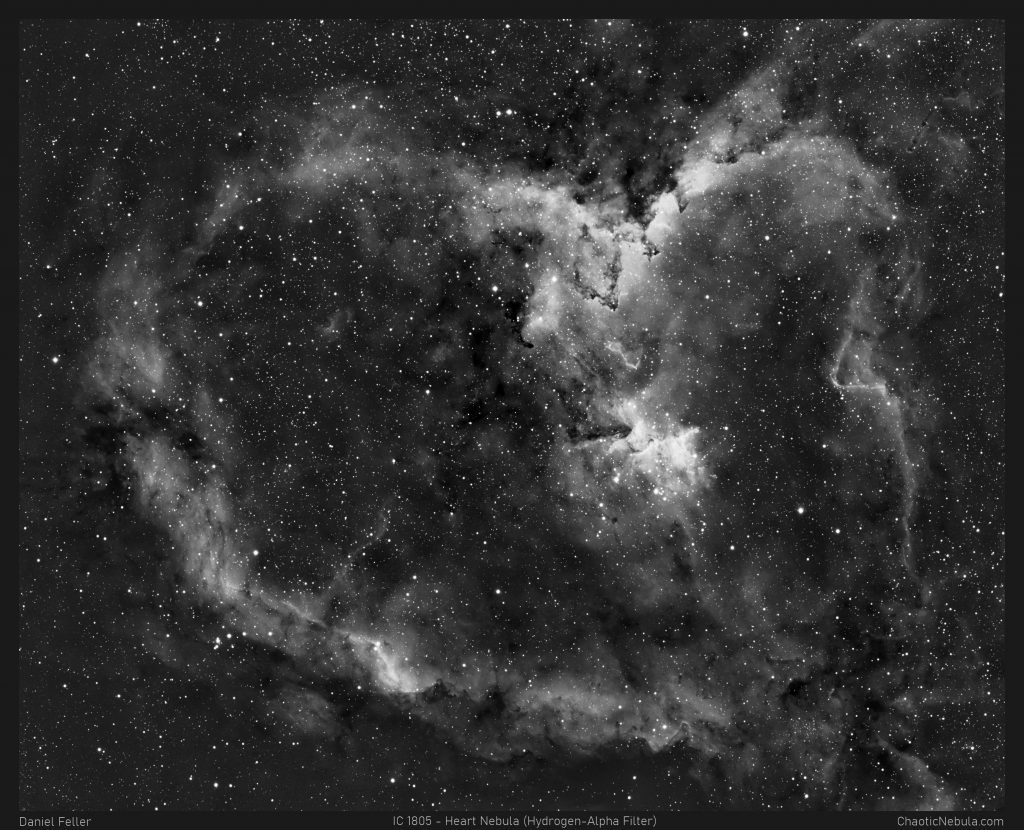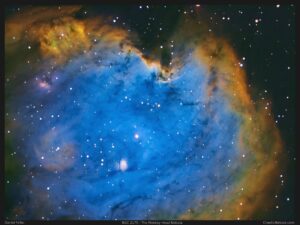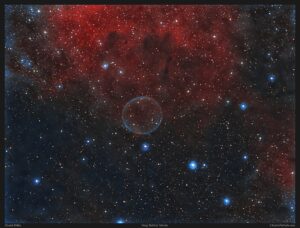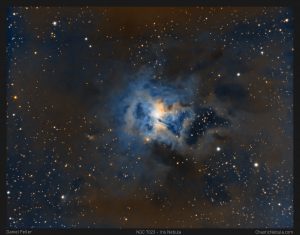The Heart Nebula is an emission nebula located in the constellation Cassiopeia. The monochrome images shows the glowing, ionized hydrogen gas. Looking at the nebula through a hydrogen-alpha filter, it is quite easy to see how the nebula got its name.
IC 1805 is roughly 7,500 light years away, which means the light captured today, left the nebula 7,500 years ago, about the time humans first started smelting copper.

Imaging Details
- Workflow: Narrowband
- Mosaic: 15 panels
- Hydrogen-Alpha Filter: 12*600 seconds per panel
- Binning: Ha at 2×2
- Total Imaging Time: 30 hours minutes
- Imaging Dates (14 nights):
- 8/11/2020
- 8/18/2020
- 8/29/2020
- 8/30/2020
- 9/11/2020
- 9/17/2020
- 9/19/2020
- 9/22/2020
- 9/23/2020
- 10/7/2020
- 10/8/2020
- 10/9/2020
- 11/6/2020
- 11/11/2020
Mosaic Pieces
The Heart Nebula is a very large nebula. In order to capture the main part of the heart, I had to do a mosaic of 15 panels. Each panel comprised of 12 separate images with each image capturing data for 10 minutes. This yielded a total time of 2 hours per panel and 30 hours for the entire mosaic.

Normally, I prefer to capture 3 hours per panel but because of the time required to capture enough data for the 15 panels, I had to limit to only 12 images per panel.


